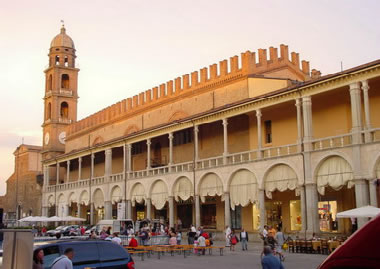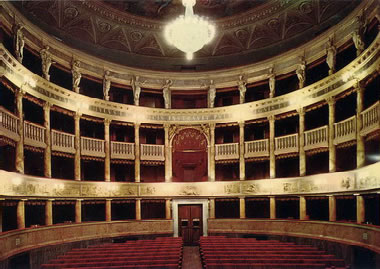Of Roman origins, Faenza is a splendid city of art whose fame already shone in the Renaissance period of the production of exquisitely made pottery that was exported all over Europe. The name, coming from the Romans who developed this center under the name of Faventia, has become synonymous with ceramics (majolica) in various languages, including French (faïence) and English (faience).
Faenza's architectural attractions are concentrated in the two contiguous main squares: Piazza del Popolo, lined by two double order porticoed wings, and Piazza della Libertà.This town is home to the International Museum of Ceramics houses pieces from all over the world and from every epoch, from classical amphoras to the works of Chagall and Picasso, and there is a rich section dedicated to Faenza pottery in the golden age of the Renaissance.
In September and October international contemporary and classical ceramic art events draw majolica amateurs, collectors and artists to Faenza from all over the world. In June the Palio del Niballo, a tournament between five horsemen from the districts of the town, re-evokes the magnificence and struggles of Faenza in the Manfredi epoch.
Typical regional dishes include home-made tagliatelle, cappelletti, lasagna and strozzapreti with the rich Romagnol meat sauce.

















